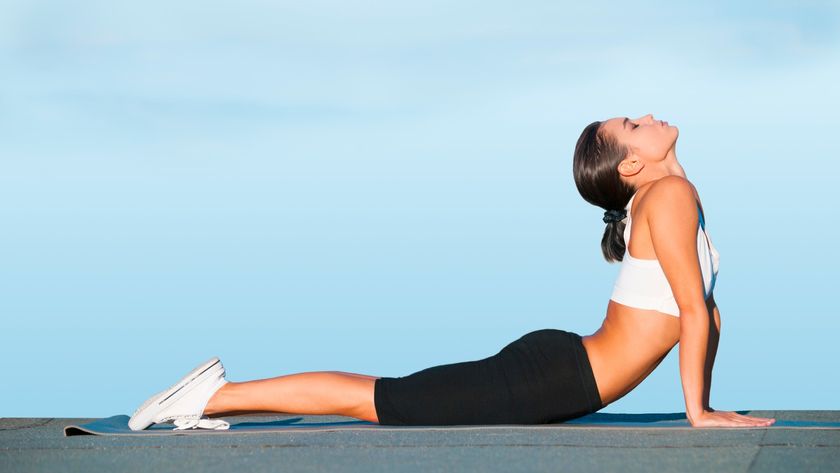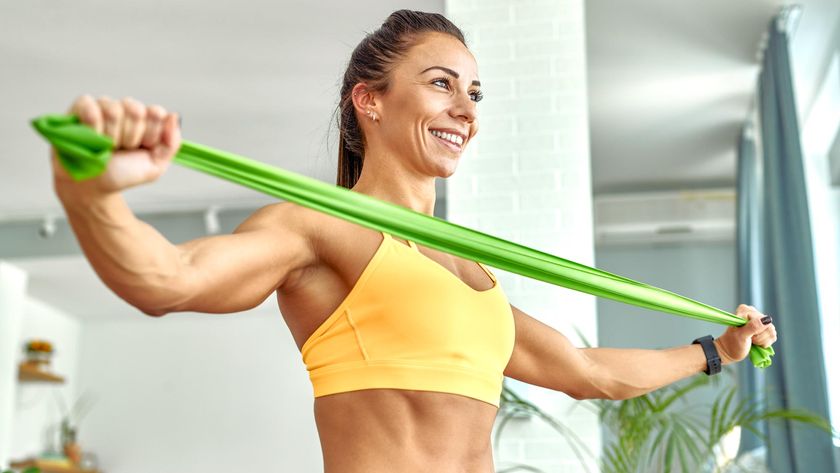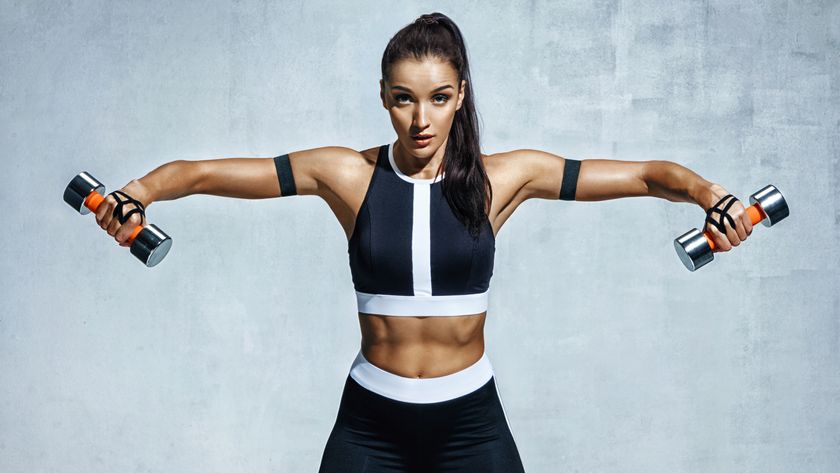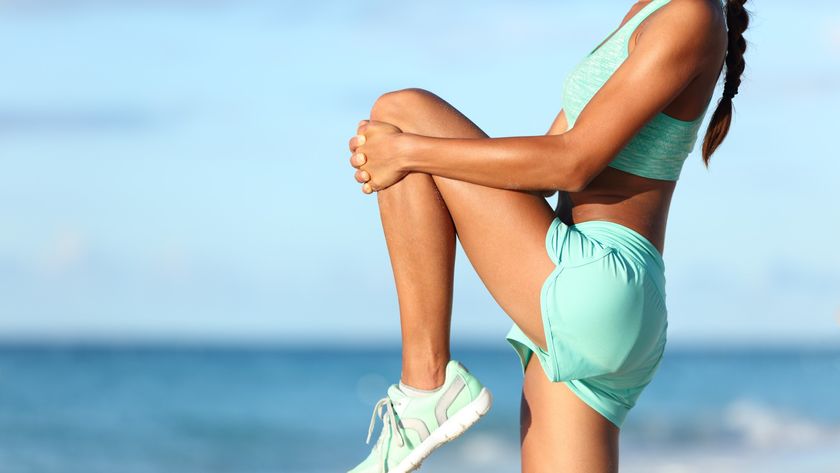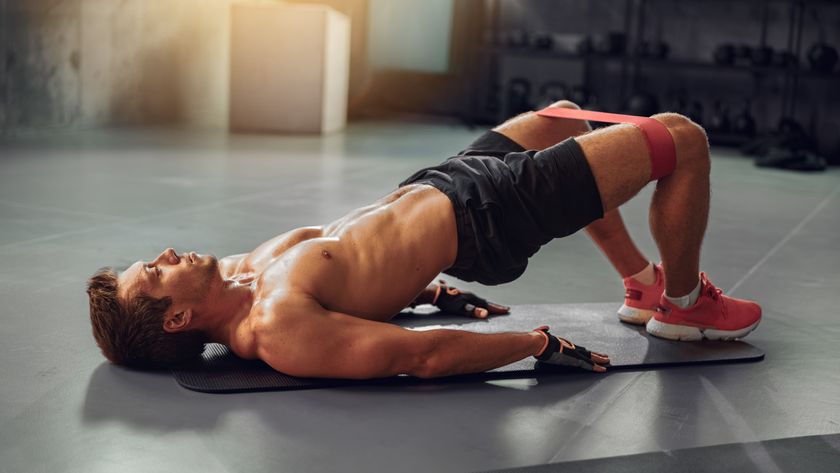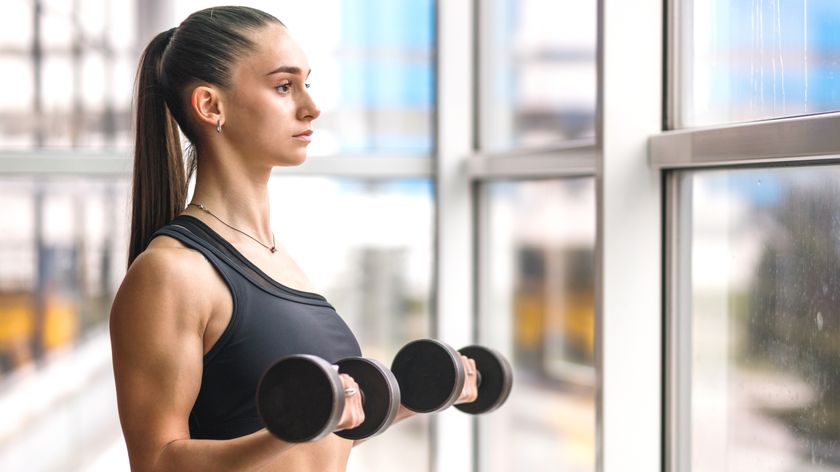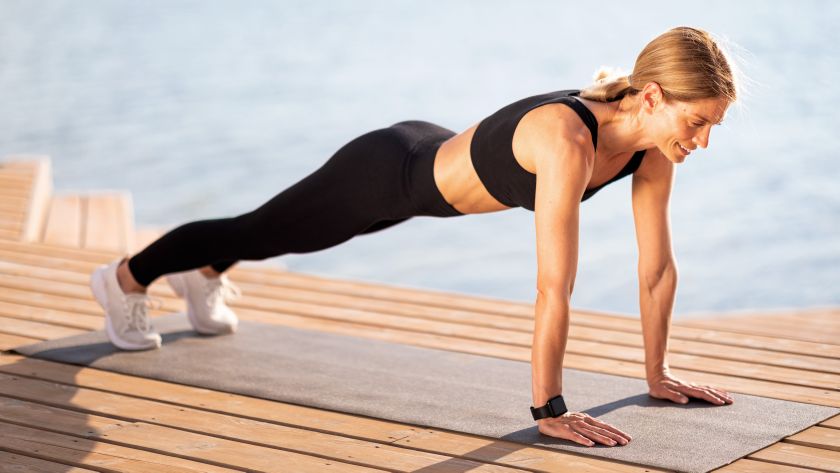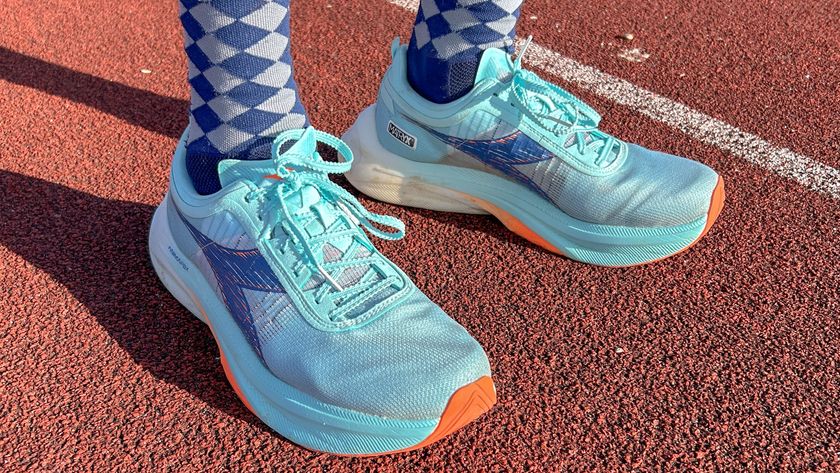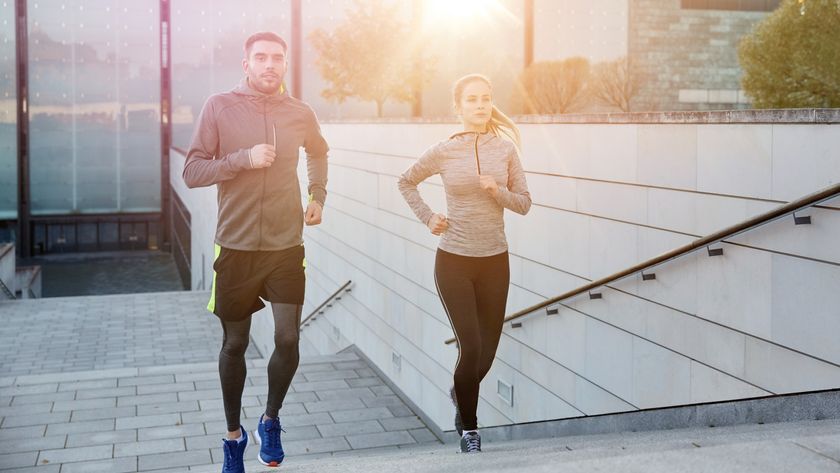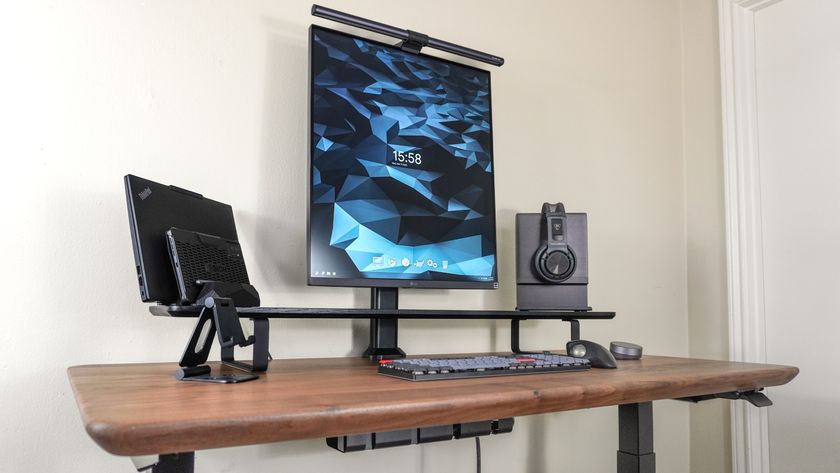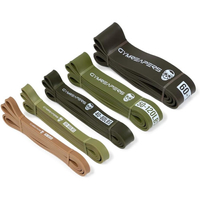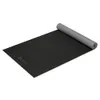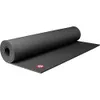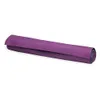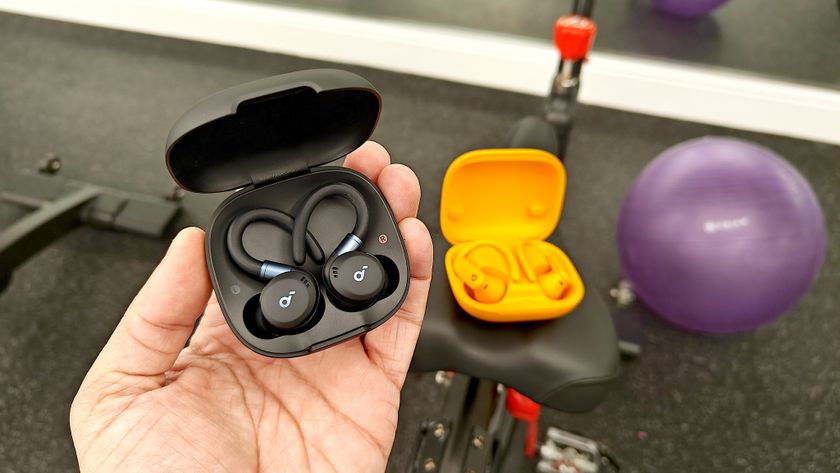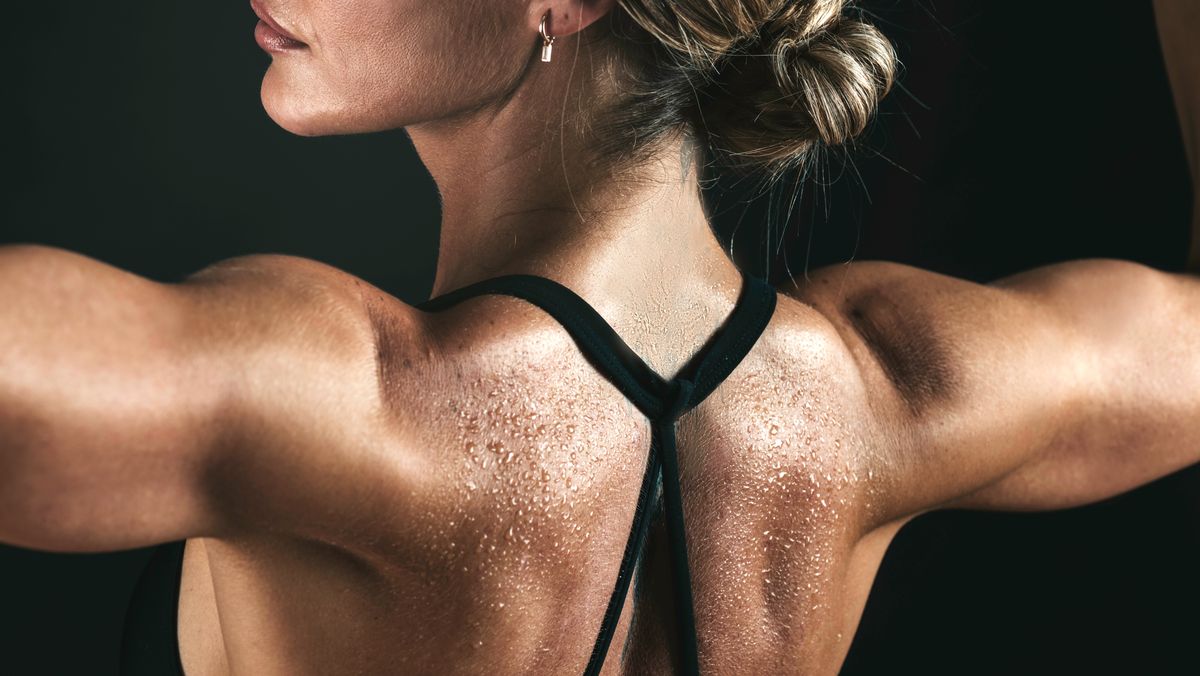
Gentle stretching and a regular shoulder mobility routine could help you build flexibility in your upper body and strengthen your shoulder muscles.
As someone who is dealing with a weak left rotator cuff, I’m always looking to safeguard my shoulders from pain and build strength in my back and the muscles surrounding my shoulders. If you’re unfamiliar with the rotator cuff, this group of muscles and tendons surrounds the shoulder joints to stabilize the shoulders and support movement.
If you want to protect your shoulders from injury and strengthen the upper body muscles, give the exercises below a try. I also recommend having one of the best resistance bands handy.
What are the rotator cuff muscles?
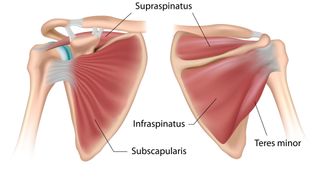
Think of your rotator cuff as a collection of tendons and muscles that surround and stabilize the shoulders and provide a range of motion. There are four major players to know, including:
- Supraspinatus
- Infraspinatus
- Teres minor
- Subscapularis.
According to the Mayo Clinic, a rotator cuff injury can be categorized as a dull shoulder ache that worsens when you move or exercise; for some, it can wake you up at night. Some people may need treatment, but for others, specific exercises that target muscle groups in the chest, shoulders, arms and back can help or even be preventative.
However, before you jump into any rehabilitation or start a new exercise regime, always consult your physician, physical therapist, physiotherapist, or similar to ensure you receive an accurate diagnosis and plan of action.
Gymreaper resistance bands: now $59 @ Amazon
Gymreaper bands come with 5 color-coded options ranging from 10 to 150 lbs. Get next-level resistance with latex bands designed to resist even the strongest muscles.
What is the 3-move shoulder mobility routine?
Over the years, I’ve learned to focus on two areas when building resilient shoulders; resistance exercises will help strengthen the muscles supporting the shoulders, creating stability and balance, and a mobility or flexibility routine can improve the range of motion and protect against injury.
Prone shoulder stretch
I use this shoulder stretch to open my shoulders and build upper body flexibility. It stretches the typically overworked and tight pectoral muscles, triceps and anterior deltoids, gently rotating the torso to create space in your spine.
Combined with weak back muscles, overused muscles could lead to imbalance and instability elsewhere, so counteract this by releasing tension from these areas.
Lay on your stomach, extend your right arm to the side and roll toward your outstretched arm. Press down with your right palm and bend your left knee, lowering the foot to the ground or flipping the leg over your body to the outside of your right leg.
Keeping the outstretched arm close to your hip will reduce the intensity while bending the elbow to 90 degrees will increase difficulty. Elevate your hand on a yoga block to help you drop deeper into the stretch.
Hold the stretch on each side for 30-60 seconds and repeat for 2-3 sets.
Banded reverse fly
To nail the reverse fly, squeeze your shoulder blades together and maintain a soft elbow bend as you draw the band toward your chest to target the posterior deltoids, upper back (trapezius) and rhomboids. You can also use cable machines and dumbbells, but I like using a heavy-duty resistance band to work on stability and control.
Start by hinging forward at your hips and sending your bum backward, maintaining a neutral spine and flat back. Gently brace your stomach and grip the resistance band using both hands. The closer together your hands are, the harder the exercise will be. Pull the band toward your chest, squeeze your back, pause, then reverse the movement.
Complete 3-4 sets of 8-12 reps.
Banded shoulder dislocates
The exercise is commonly used as a warm-up exercise and mobility drill to improve the range of motion in the shoulders before exercises like the overhead press or technical lifts like snatches, overhead squats, or cleans.
Bands will give you more freedom than PVC pipes or sticks as you can create tension on the band by pulling against it. It comes down to preference, but I recommend using a band first.
Stand with your feet hip or shoulder-width distance apart. Hold a band in both hands in front of your thighs, brace your stomach and avoid arching your back.
Drive your arms overhead, keeping tension through the band, then, with arms extended above your head, slightly shrug your shoulders and rotate your arms so that the band passes over your head and down toward your bum. Reverse the movement back to the starting position and continue for reps.
Start with your hands wider on the band and progressively move them closer together as your flexibility improves.
Complete 3-4 sets of 8-12 reps.
Bottom line
If you’re unsure which muscles to target, I recommend focusing on the three heads that comprise the shoulder muscles, including the anterior, lateral and posterior deltoids. The upper and mid trapezius, rhomboids (deeper back muscles that help retract and rotate the scapula), triceps and biceps are also worth targeting.
Remember, a one-off program might alleviate immediate pain or discomfort, but you'll need to follow a consistent program, several times per week, on an ongoing basis, to maintain range of motion, flexibility and strength. Your physician can provide you with a program tailored to you and advise on what exercises to follow.
Although this program works for me — I currently perform it two to three times per week — it might not be for you, so I can’t stress enough how important it is to take note of how your body feels and responds to each exercise. Stop if you experience sharp or persistent pain and always speak to a qualified medical professional if you’re working with an injury.
More from Tom's Guide
- Boost your mobility and reduce stiffness with this 5-move stretching routine
- This one-minute stretch opens your hips and builds lower body flexibility
- Develop healthy hips and strengthen your lower body with this 3-move stretching routine
Sign up to get the BEST of Tom's Guide direct to your inbox.
Get instant access to breaking news, the hottest reviews, great deals and helpful tips.

Sam Hopes is a level 3 qualified trainer, level 2 reiki practitioner and senior fitness writer at Tom's Guide. She is also currently undertaking her Yoga For Athletes training course. Sam has written for various fitness brands and websites over the years and has experience across brands at Future such as Live Science, Fit&Well, Coach, and T3.
Having worked with fitness studios like F45 and Virgin Active, Sam now primarily teaches outdoor bootcamps, bodyweight, calisthenics and kettlebells. She also coaches mobility and stretching-focused classes several times a week and believes that true strength comes from a holistic approach to training your body.
Sam has completed two mixed doubles Hyrox competitions in London and the Netherlands and finished her first doubles attempt in 1:11.
